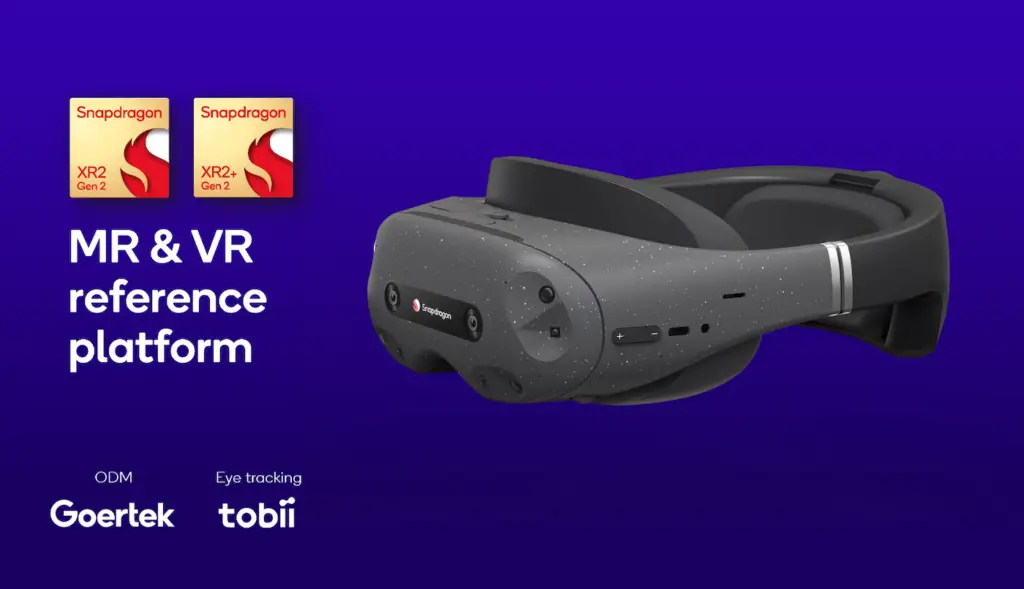At CES 2024 in Las Vegas, Qualcomm unveiled the powerful on-device AI capabilities of the Snapdragon XR2+ Gen 2 chip designed for virtual and mixed reality headsets. During a Jan. 10 keynote, Qualcomm president and CEO Cristiano Amon discussed the potential enterprise applications for virtual reality, specifically in training scenarios, and proposed three questions that VR and MR technology might address for businesses: “How do you train people? How do you fully immerse in that digital environment? How do you evolve communications?” Amon also shared his insights on the future of AI-enhanced phones. Note: This article is updated to reflect the Jan. 10 Qualcomm keynote. TechRepublic is bringing exclusive coverage of CES 2024 remotely.
The Snapdragon XR2+ Gen 2 marks a significant advancement from the previous Snapdragon XR2 Gen 2 Platform, delivering impressive features such as 4.3K by 4.3K per eye resolution, 90 frames per second, support for 12 or more concurrent cameras for movement tracking, and connectivity options like Wi-Fi 7, Wi-Fi 6E, Bluetooth 5.3, and Bluetooth 5.2. Furthermore, the Snapdragon XR2+ Gen 2 boasts a 15% higher GPU frequency and a 20% higher CPU frequency compared to its predecessor, enabling smoother performance for “room-scale screens, life-size overlays, and virtual desktops,” according to Hugo Swart, vice president and general manager of XR at Qualcomm Technologies, Inc.
In addition, Amon emphasized Qualcomm’s commitment to creating a pervasive computing engine capable of running AI technology and developing use cases and applications for AI capabilities in processors and semiconductors. This advancement will lead to more efficient virtual desktops, virtual meetings, and virtual demonstrations for businesses and employees.
Furthermore, Qualcomm is positioning itself to compete with industry giants such as Apple, Intel, and NVIDIA, as Samsung and Google plan to incorporate the Snapdragon XR2+ Gen 2 in their upcoming virtual reality offerings on Android. This move could potentially challenge the Apple Vision Pro. The Snapdragon XR2+ Gen 2 also competes directly with Intel’s AI PC technology for lightweight devices and automotive, as well as with NVIDIA’s semiconductors.
Qualcomm’s vision extends beyond virtual and mixed reality, as Amon also discussed the future of AI-enhanced phones during his keynote. He envisions the phone’s role evolving to not only support apps but also to seamlessly communicate with the cloud, enhancing its capabilities with AI. This evolution will enable tasks such as calling an Uber directly through a generative AI assistant connected to the cloud, redefining the way we interact with our mobile devices.
At CES 2024, Qualcomm also showcased its latest automotive technology, including the Snapdragon Digital Chassis platform, Snapdragon Ride Platform, Snapdragon Ride Flex SoC, Snapdragon Car-to-Cloud Services, and Snapdragon Digital Chassis SoCs for two-wheelers. These innovations affirm Qualcomm’s dedication to advancing automotive technology and shaping the future of software-defined vehicles.
As Qualcomm continues to push the boundaries of AI, VR, and automotive technology, it will undoubtedly play a pivotal role in shaping the future of these industries. With its innovative solutions and strategic partnerships, Qualcomm remains at the forefront of technological advancements, driving progress and innovation across various sectors.

